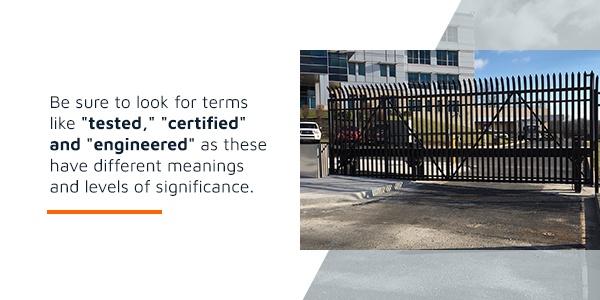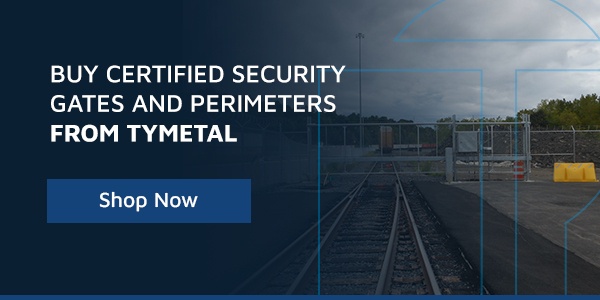Understanding Crash Ratings
Security gates and bollards play a crucial role in protecting entrances from unauthorized access and minimizing damage during accidental collisions. In modern industrial and defense settings, these barriers are essential for maintaining safety. Standardized crash ratings in the U.S. help determine the effectiveness of such security measures. Understanding crash ratings is key when selecting the right barrier or gate. These ratings give you an idea of how well a barrier can withstand impacts from vehicles. Whether you're looking for a secure gate or bollard, knowing how to interpret these ratings will help you make an informed decision. Three main factors influence crash test ratings: Some rating systems only certify barriers up to a certain distance. The combination of these three elements defines the crash rating of a barrier. You may come across K-ratings or M-ratings, so it's important to understand their differences. K-ratings were introduced by the Department of Defense (DOD) in 1985. These ratings assess how far a 15,000-pound vehicle travels past a barrier at a given speed. A K-rating is only awarded if the vehicle doesn't travel more than 50 feet beyond the barrier. Higher K-ratings indicate tests conducted at higher speeds with the same vehicle type and weight. Examples of K-ratings include: K-ratings are further divided into L1, L2, and L3 based on how far the vehicle penetrates the barrier: The highest rating under this system would be K12:L3, meaning a 15,000-pound vehicle traveling at 50 mph penetrated less than 3 feet. When interpreting K-ratings, the "K" number indicates the speed, while the "L" number shows the penetration distance. M-ratings have largely replaced K-ratings in recent years, following ASTM standards. Unlike K-ratings, which focus on the front of the vehicle, M-ratings consider how far the vehicle’s payload travels beyond the barrier. They also take into account vehicle weight, speed, and penetration distance. M-ratings are similar to K-ratings in that the numbers correspond to test speeds. For example: M-ratings are categorized into P1, P2, P3, and P4 based on how far the vehicle traveled beyond the barrier: M-ratings allow for greater distances than K-ratings, making them more precise. An equivalent of K12:L3 would be M50:P1, where a 15,000-pound vehicle moving at 50 mph travels no more than 3.3 feet beyond the barrier. When evaluating crash-rated products, it's important to understand the difference between “tested,†“certified,†and “engineered.†Each term has a specific meaning and level of reliability: It's best to look for “certified†ratings. If you see “tested†or “engineered,†ask whether the product met the claimed standards and whether it was physically tested. Without actual testing, there's no guarantee of real-world performance. ASTM uses specific models and codes to classify anti-ram tests based on speed, weight, and penetration distance. Understanding these codes helps you interpret crash ratings accurately. Speed ratings include: Penetration ratings for low-speed tests are as follows: For high-speed tests, the standards are slightly more flexible: When security is a top priority, you need barriers that meet rigorous standards. At TYMETAL, all our security gates and crash barriers have achieved prestigious ASTM crash ratings. You can trust that our products meet universal, unbiased standards set by ASTM. Reviewed By Chris Herold on 4/29/2021 Silicone Products,Neutral Cellulase,Acid Cellulase,Effective Bio-Polishing Product Dymatic Chemicals, Inc. , https://www.dymachem.comA Guide to Understanding Crash Ratings

The 3 Factors That Determine Crash Ratings
K-Ratings: Older Standards
M-Ratings: Modern Standards
Tested vs. Certified vs. Engineered

ASTM Models and Codes
Buy Certified Security Gates and Perimeters From TYMETAL

